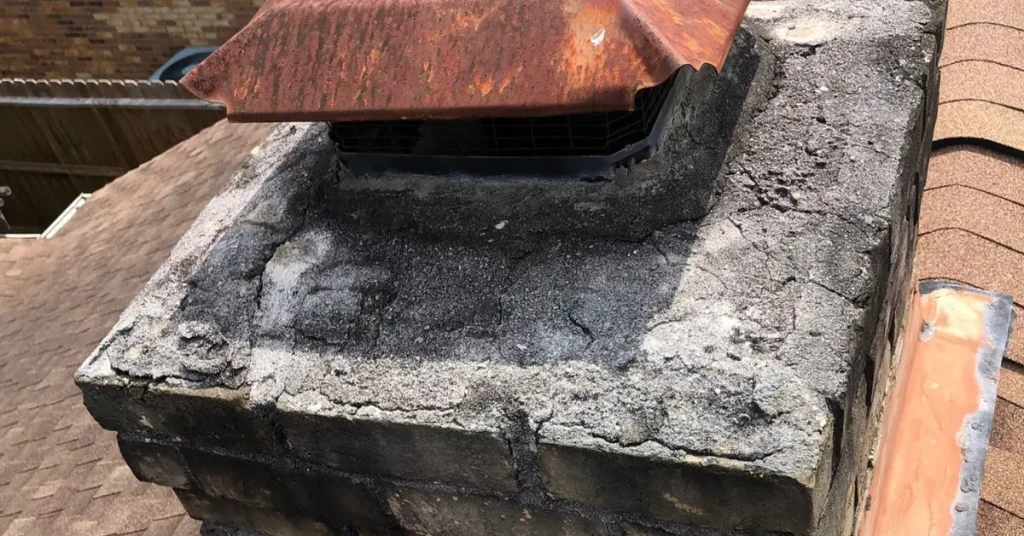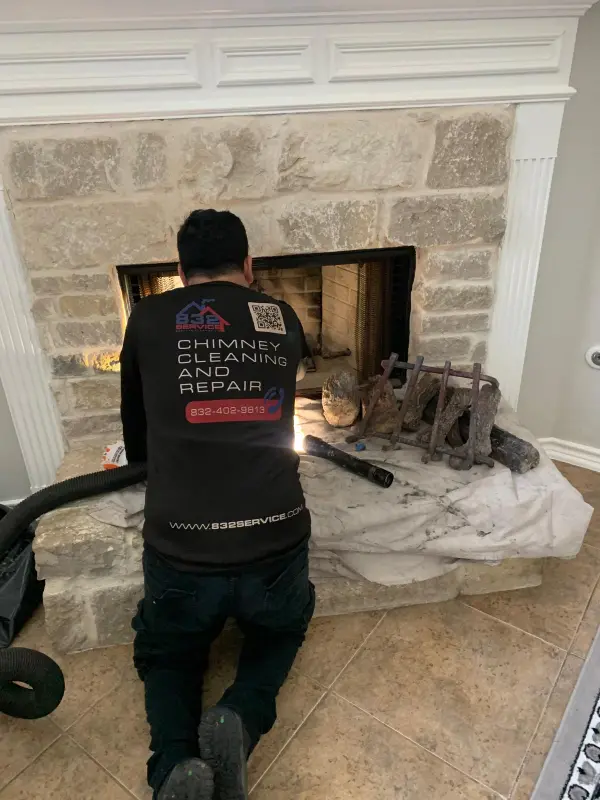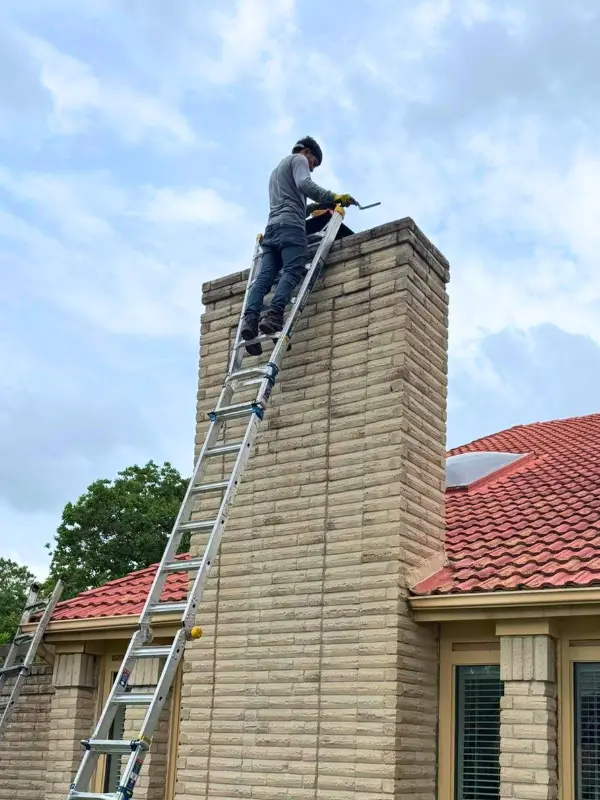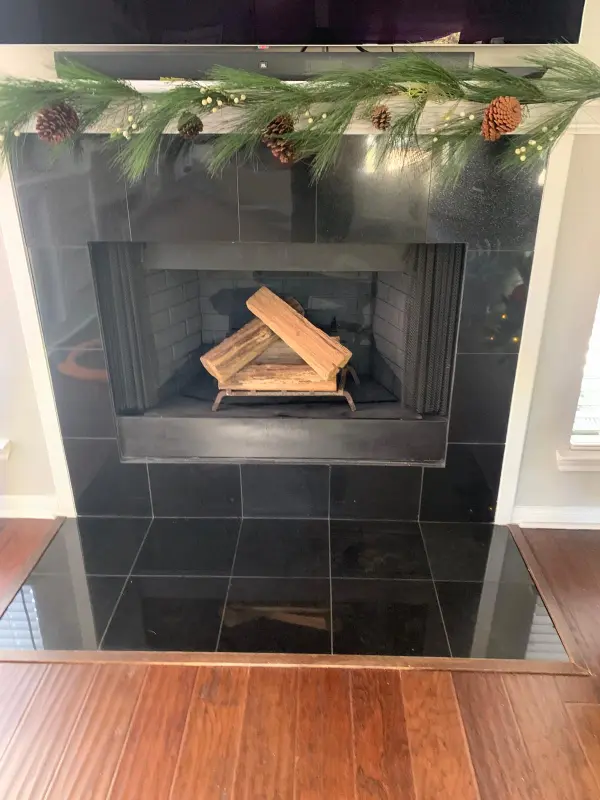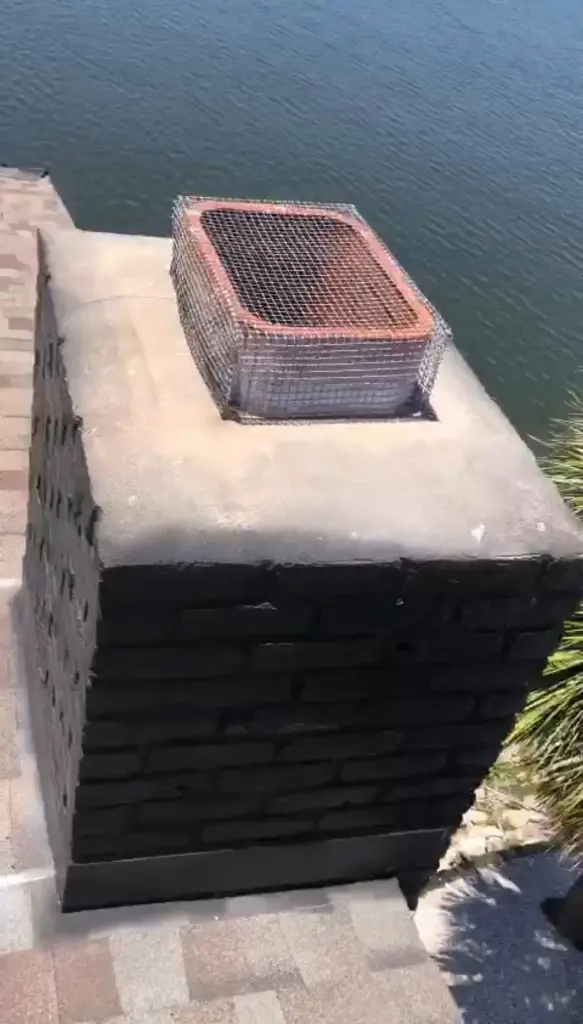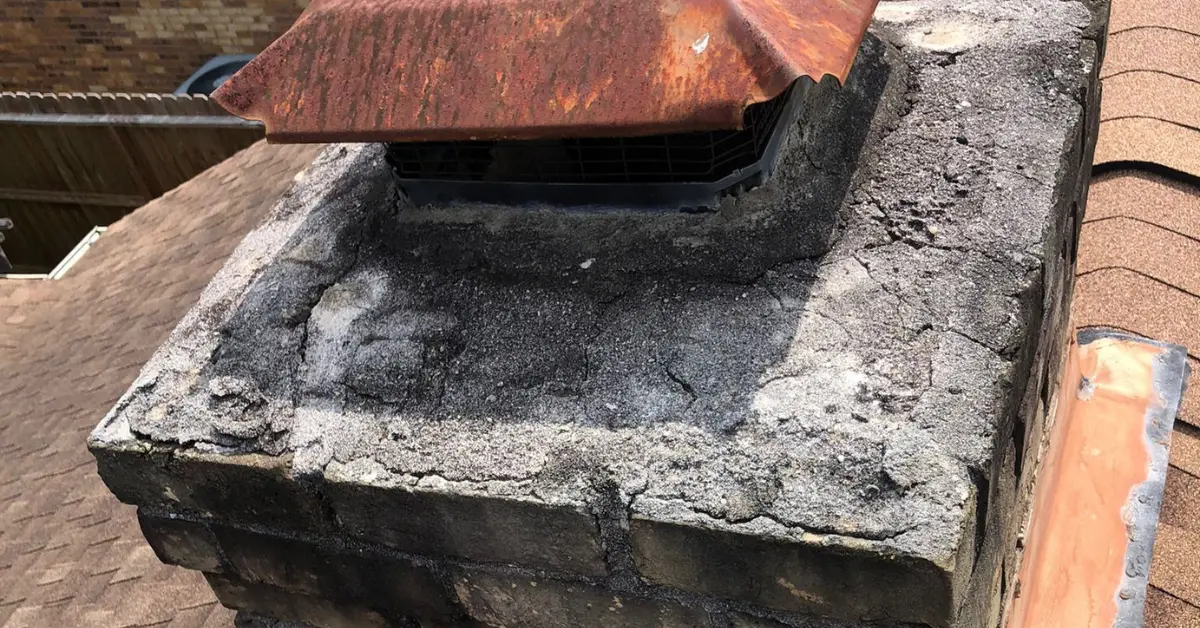Creosote Buildup in Chimneys: Formation, Risks, and Prevention
You know that black, sticky stuff that builds up inside your chimney? That’s creosote, and every wood-burning homeowner should be familiar with it. It forms naturally when wood is burned, but it can become a serious problem if left unattended. The good news is that with proper knowledge and care, you can keep your home warm and safe throughout the winter. Let’s explore what this substance is and why it’s so essential for your family.
What Is Creosote and How Does It Form in Your Chimney?
Think of creosote as the byproduct of incomplete burning. When wood burns, it releases gases and particles that travel up your flue. As these materials cool, they adhere to the inner walls. Over time, these deposits accumulate and harden into different stages.
The first stage looks like loose, flaky soot that’s easy to brush away. Stage two appears as shiny, hard flakes that take more effort to remove. The third stage is the most dangerous. It looks like thick, sticky tar that drips down the walls. This final stage is challenging to clean and highly flammable.
Understanding Coal Tar and Wood Creosote Deposits
Wood burning creates a unique type of residue that differs from coal tar. When you burn logs, the smoke contains unburned wood particles and condensed vapors. These materials cool as they rise, creating that crusty layer inside your flue.
The cooler your fire burns, the more creosote you’ll get. Wet or unseasoned wood exacerbates the problem. That’s because it produces more smoke and lower temperatures. This means more condensation on your walls and faster buildup.
What Causes Creosote Buildup in Your Flue
Several factors accelerate the accumulation of this material. Burning green or wet wood is the biggest culprit. When wood isn’t properly dried, it releases excessive moisture and smoke. This creates perfect conditions for rapid deposit formation.
Restricted airflow also plays a significant role. If you close your damper too much, combustion becomes incomplete. Cool temperatures in your flue contribute to. The cooler the surface, the faster the vapors condense and stick. Understanding these causes helps you prevent problems before they start.
Is Creosote Dangerous? The Risks Every Homeowner Should Know
Here’s the straight truth – yes, creosote is hazardous. This substance is highly flammable and can ignite at temperatures around 451 degrees Fahrenheit. Once it catches fire, it burns extremely hot and fast. These fires can crack your masonry, damage your liner, or even spread to your home’s structure.
Beyond fire hazards, the fumes can affect your indoor air quality. When deposits block airflow, dangerous gases like carbon monoxide can back up into your living space. This poses a significant health risk to everyone in your household.
Chimney Fire Hazards from Tar Creosote Accumulation
These fires are terrifying and destructive. They sound like a freight train or a low-flying airplane. Flames can shoot out the top of your stack. The heat can cause masonry to crack or warp metal liners. The worst part? They often happen without warning when creosote ignites unexpectedly.
Even a small fire can cause hidden damage. Cracks in your liner might not be visible from the outside. That’s why you should always get a professional inspection after any suspected incident, even if everything looks fine.
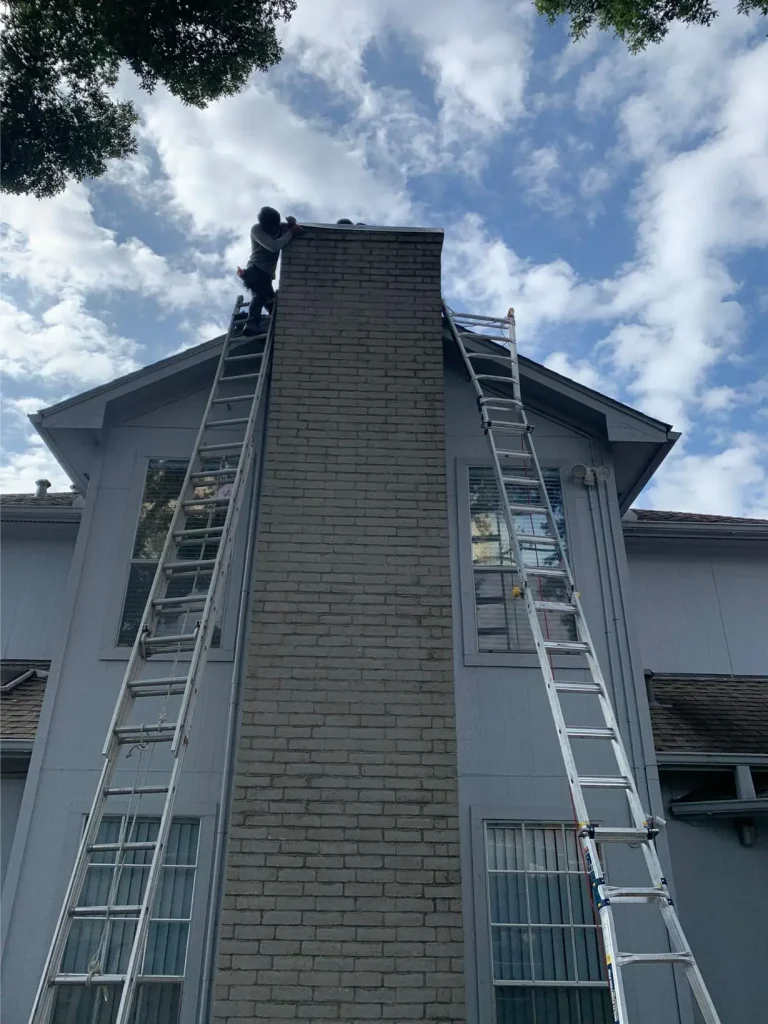
Health and Safety Concerns for Your Fireplace and Chimney
Blocked passages don’t just create fire risks. They also prevent proper ventilation of toxic gases. Carbon monoxide is odorless and deadly, making it especially dangerous. Symptoms of exposure include headaches, dizziness, and nausea.
Poor ventilation also means smoke backing up into your rooms. This exposes your family to harmful particles and can aggravate respiratory conditions like asthma. Children and elderly family members are especially vulnerable to these effects.
How to Prevent Creosote Buildup in Your Fireplace
Prevention is way easier than dealing with a dangerous situation later. Start by burning only dry, seasoned wood that’s been split and stored for at least six months. Hardwoods like oak and maple are your best bet. They burn hotter and cleaner than softwoods.
Keep your fires burning hot and bright. Small, smoldering fires produce way more smoke and deposits. Make sure you have adequate airflow by keeping your damper open while burning. Here are some key prevention tips:
- Burn only seasoned hardwood with less than 20% moisture content
- Build hot fires rather than letting them smolder
- Never burn trash, cardboard, or treated wood
- Keep your damper fully open during use
Regular inspections catch problems before they become emergencies. Most experts recommend checking your system at least once a year.
Our Google Reviews
Trustindex verifies that the original source of the review is Google. Raphael did an excellent job with our cleaning. On time, clear communication and professional to deal with. Highly recommended.Posted onTrustindex verifies that the original source of the review is Google. Rafael was working with a neighbor when we met. He assessed the state of my chimney , took photos, explained where all the areas of concern were and the described what would be required to keep things safe and stable. Raphael was informative and straightforward, no pressure and he was very kind. he and his helper did the work exactly as he stated in a timely manner. I would highly recommend recommend for any repairs, Quality work. Thank you 832 Home Service and RaphaelPosted onTrustindex verifies that the original source of the review is Google. Great service. Provided good consultation and service. I would reach out to them for vent cleaning everytime.Posted onTrustindex verifies that the original source of the review is Google. Excellent cleaning service.Posted onTrustindex verifies that the original source of the review is Google. Highly recommended amazing service and they did a great jobPosted onTrustindex verifies that the original source of the review is Google. The team was very helpful and knowledgeable, they took their time I Had a great experience with them. They were on time, professional, and did a thorough job cleaning my chimney. The fireplace works so much better now, and I feel safer using it. If you need chimney cleaning in Houston, I highly recommend them!Posted onTrustindex verifies that the original source of the review is Google. HIGHLY recommend I had wasp in my house that apparently came from my chimney ! They found the hole and took care of it! Also, did a deep clean after a while I didn’t clean. I’m so so happy ! Also , did a crown repair . Guys, can’t recommend enough!Posted onTrustindex verifies that the original source of the review is Google. You guys are awesome!!! I had an amazing experience From start to finish, they were professional, efficient, and detail oriented. provided great suggestions, and delivered high quality work on time and within budget. The crew was friendly, hardworking, and left everything clean after the job was done. I highly recommend themPosted onTrustindex verifies that the original source of the review is Google. I looked into several companies in Houston, Texas,, that could do a thorough chimney cleaning and repair, and this company was the most professional and highly recommended! I will definitely use their services in the future and highly recommend them to anyone interested in a safe chimney. Many thanks to the team that assisted us! 🙏🏻Posted onTrustindex verifies that the original source of the review is Google. These guys were awesome!!!!! They cleaned my dryer for a very good price and were fast!Verified by TrustindexTrustindex verified badge is the Universal Symbol of Trust. Only the greatest companies can get the verified badge who has a review score above 4.5, based on customer reviews over the past 12 months. Read more
Professional Chimney Sweep Services: How to Get Rid of Creosote
DIY cleaning works for light, first-stage deposits, but anything beyond that needs a professional touch. Certified sweeps have specialized tools and training to remove even the toughest third-stage creosote buildup. They can also spot problems you might miss.
A thorough cleaning involves more than just brushing. Professionals inspect your entire system, checking for cracks, damage, and proper ventilation. They can tell you if your cap or damper needs repairs. Most sweeps recommend annual cleanings if you use your unit regularly.
Don’t wait until you have a serious problem. Schedule cleanings based on how much you burn. Heavy users might need two cleanings per year. Occasional burners can get by with annual service.
Protecting Your Home Through Chimney Safety and Maintenance
Your fireplace adds warmth and charm to your home, but only when it’s properly maintained. Regular inspections and cleanings are investments in your family’s well-being. Think of it like changing your car’s oil. It’s basic upkeep that prevents major problems down the road.
Install smoke and carbon monoxide detectors on every level of your house. Test them monthly and replace batteries twice a year. Keep a fire extinguisher nearby and make sure everyone knows how to use it.
Finally, trust your instincts. If something seems off, such as excessive smoke, strange smells, or poor draft, call a professional right away. It’s always better to be safe than sorry when it comes to your home and family.
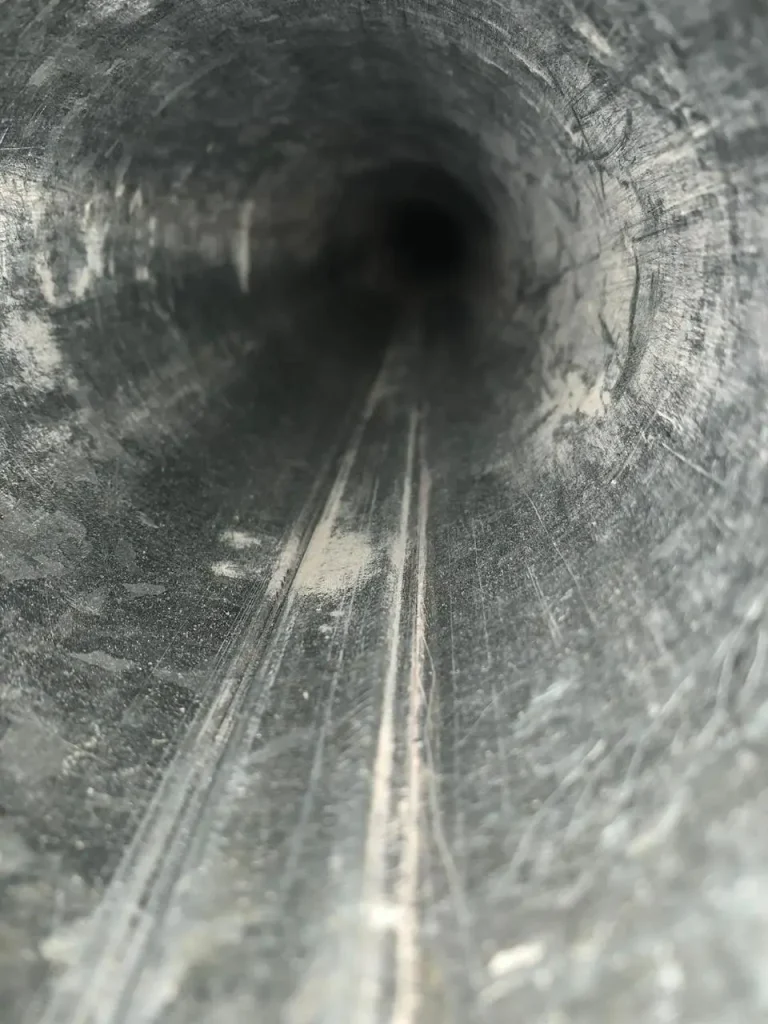
FAQ
How often should I schedule a professional chimney cleaning?
It depends on how much you use your fireplace. If you burn wood regularly throughout winter, get it cleaned annually before the season starts. Heavy users who burn daily might need two cleanings per year. Occasional users can extend the warranty to 18 months, but regular annual inspections are still recommended. Your sweep can assess buildup levels and suggest a schedule. Don’t skip inspections even if you think it looks clean – hidden problems need expert eyes.
Can I remove creosote buildup myself, or do I need a professional?
You can handle light, first-stage deposits with a basic brush. But anything beyond that flaky soot needs professional help. Stage two and three buildup requires specialized tools and training. Trying to remove hard, glazed deposits yourself can damage your liner or miss dangerous spots. Plus, pros inspect for cracks and structural issues while they clean. Save DIY for maintenance brushing between professional visits. Your safety is worth the investment.
What's the best type of wood to burn to minimize buildup?
Seasoned hardwoods are your best choice: oak, maple, ash, and hickory burn hot and clean. Ensure the wood has been split and dried for at least six months, ideally for a full year. The moisture content should be below 20 percent. You can test this with an inexpensive moisture meter. Avoid softwoods like pine for regular burning. Never burn treated lumber, painted wood, or other combustible materials. These create toxic fumes and excessive residue.
How can I tell if dangerous levels have accumulated in my chimney?
Watch for warning signs, such as a poor draft, smoke backing into your room, or a strong odor when the fireplace isn’t in use. You might notice black deposits around the damper or fireplace opening. Fires that are difficult to start or burn poorly often indicate airflow problems. If you see a shiny, tar-like coating inside, that’s stage three buildup – call a pro immediately. Annual inspections catch issues before you notice symptoms.
Does installing a chimney cap help prevent creosote formation?
A cap doesn’t prevent buildup, but it’s still essential for safety. Caps keep rain, snow, and animals out of your flue. Moisture creates rust and deterioration that makes deposits stick worse. They also contain sparks that could ignite roofing materials. Some caps include spark arrestors for extra protection. While they won’t stop deposits from forming, they protect your system’s integrity. Think of caps as part of a complete chimney health regimen, not a standalone prevention solution.
What does professional chimney sweep service typically cost?
Expect to pay between $150 and $350 for standard cleaning and inspection. Prices vary based on your location, accessibility, and the severity of the buildup. Removing heavy stage three deposits is more expensive because it requires specialized equipment and additional time. Some companies charge extra for video inspections or detailed reports. Emergency cleanings cost more than scheduled appointments. Get quotes from certified sweeps and ask what’s included. It’s more cost-effective than repairing fire damage or addressing health problems later.

